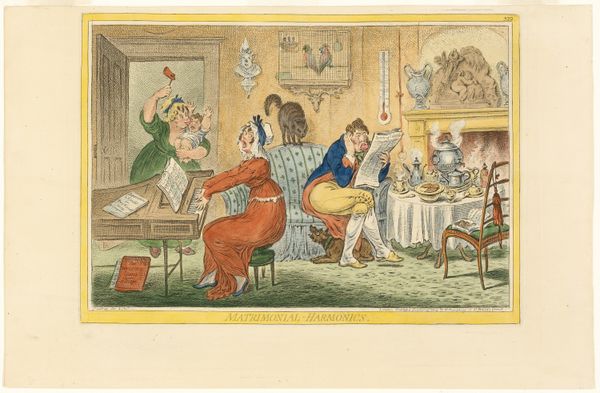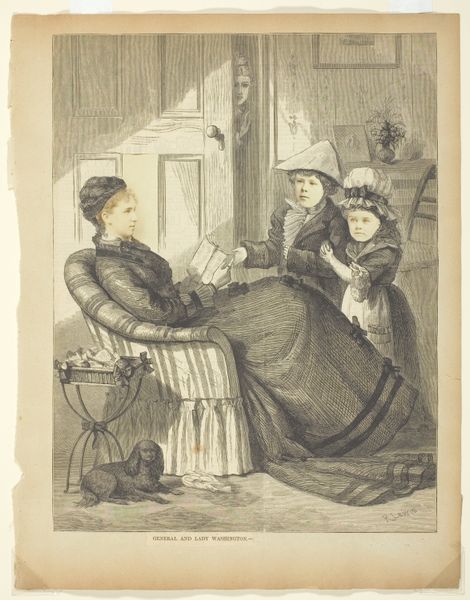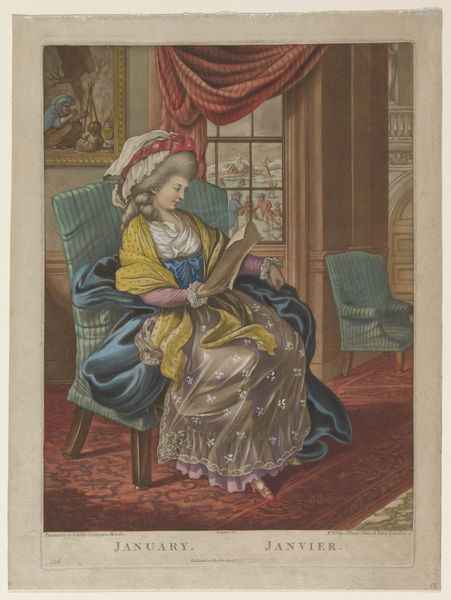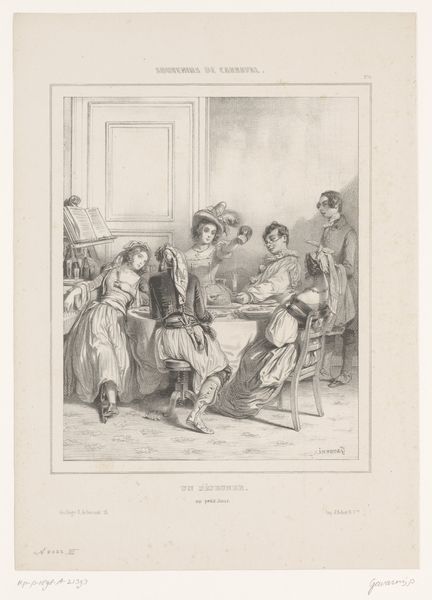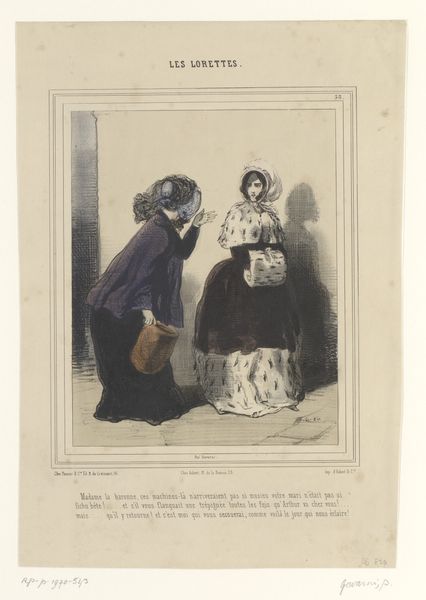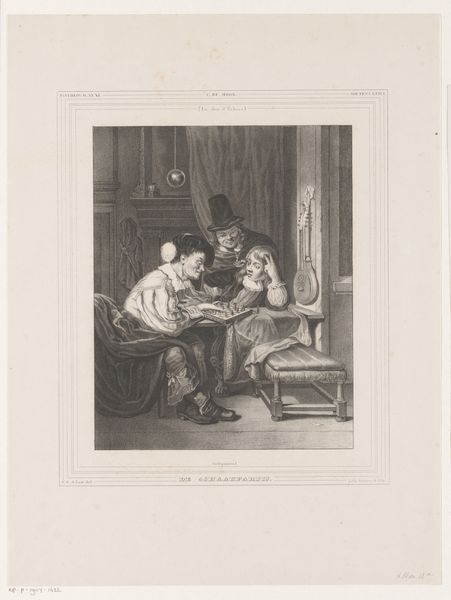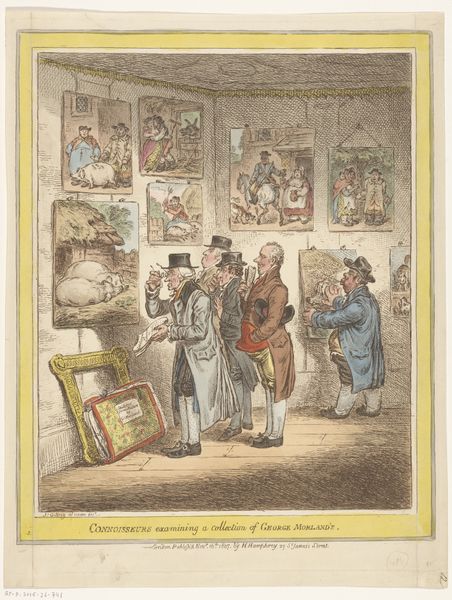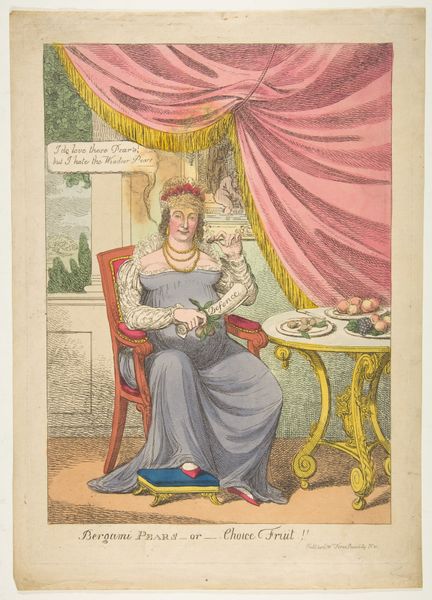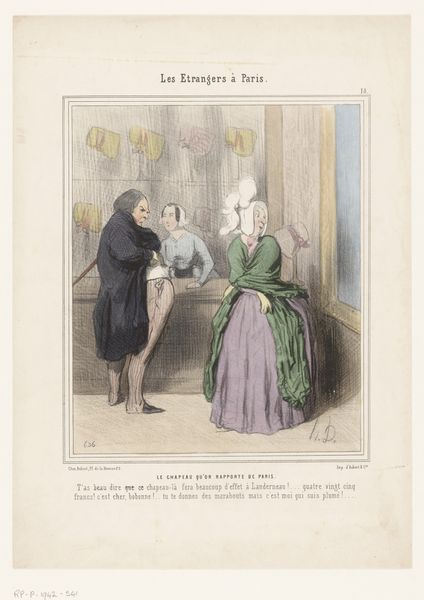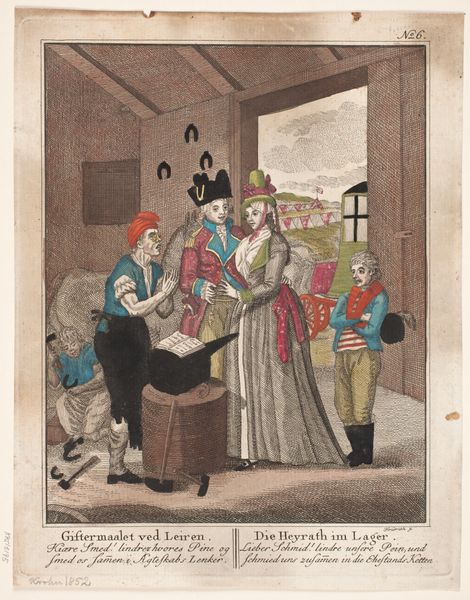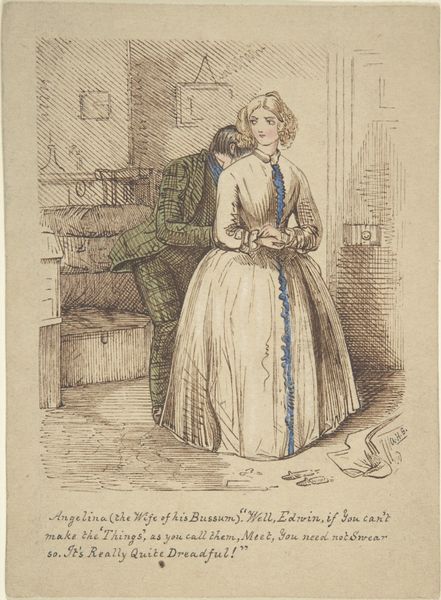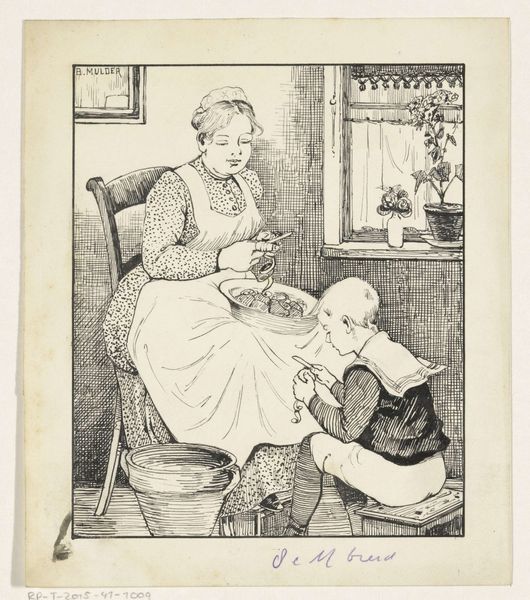
drawing, print, pen, engraving
#
drawing
#
narrative-art
# print
#
caricature
#
romanticism
#
pen
#
watercolour illustration
#
genre-painting
#
engraving
Dimensions: 416 mm (height) x 299 mm (width) (plademaal), 345 mm (height) x 268 mm (width) (billedmaal)
Editor: Here we have Gerhard Ludvig Lahde's "En falden piges biografi. Nr 2" created in 1811, using drawing, print, pen, and engraving techniques. It's an intriguing domestic scene. The woman at the door seems distressed. What stands out to you in this piece? Curator: What interests me most is how the materials used - the inexpensive printmaking, the pen and ink - speak to a certain kind of accessible imagery for a growing middle class. Look at the proliferation of printed images during this period; this wasn't rarefied oil painting for the elite. How do you think that impacted its message about social transgression? Editor: I guess it suggests that this "fallen woman's" story was meant to circulate widely, among a lot of people, maybe as a warning? Curator: Precisely. And consider the labour involved: the engraver painstakingly translating an image into reproducible form, the printmakers producing countless copies, all for consumption. This labor is hidden in plain sight but speaks to the economics of morality. Does that affect how you understand the “biography” the title suggests? Editor: Absolutely. It reframes it. It's not just about the individual woman but also about the whole system that creates and consumes her story. The prints became a commodity related to social conduct, creating moral awareness... Curator: Exactly! The very materiality forces us to consider its social context. Were this rendered in a precious medium like oil paint, our reading might be entirely different. Editor: I hadn’t thought of it that way. It’s amazing how the materials themselves carry so much meaning about social values and consumption at the time! Thanks for that new perspective. Curator: My pleasure! Considering production helps unlock narratives hidden beneath the surface of any work.
Comments
No comments
Be the first to comment and join the conversation on the ultimate creative platform.
